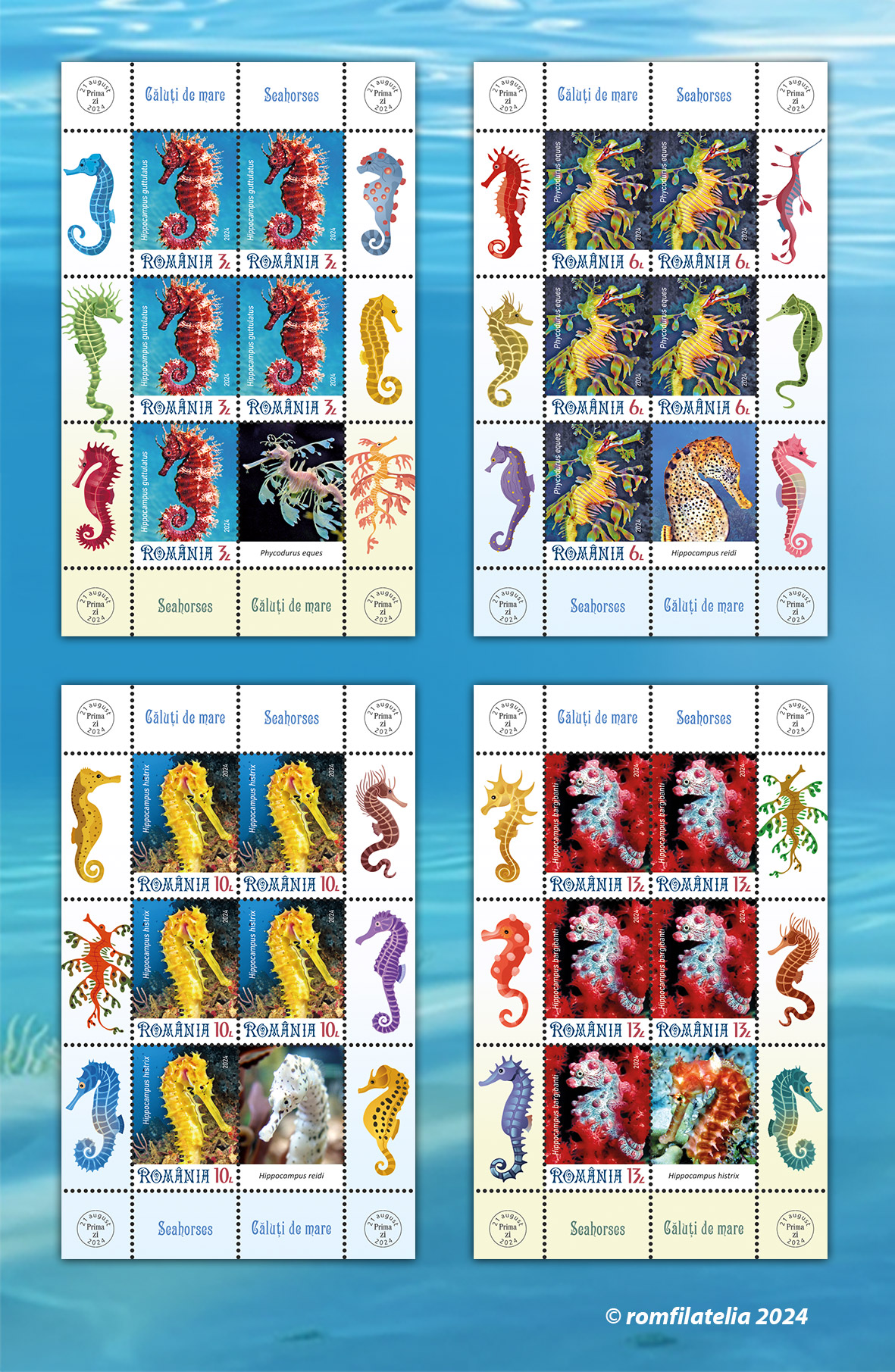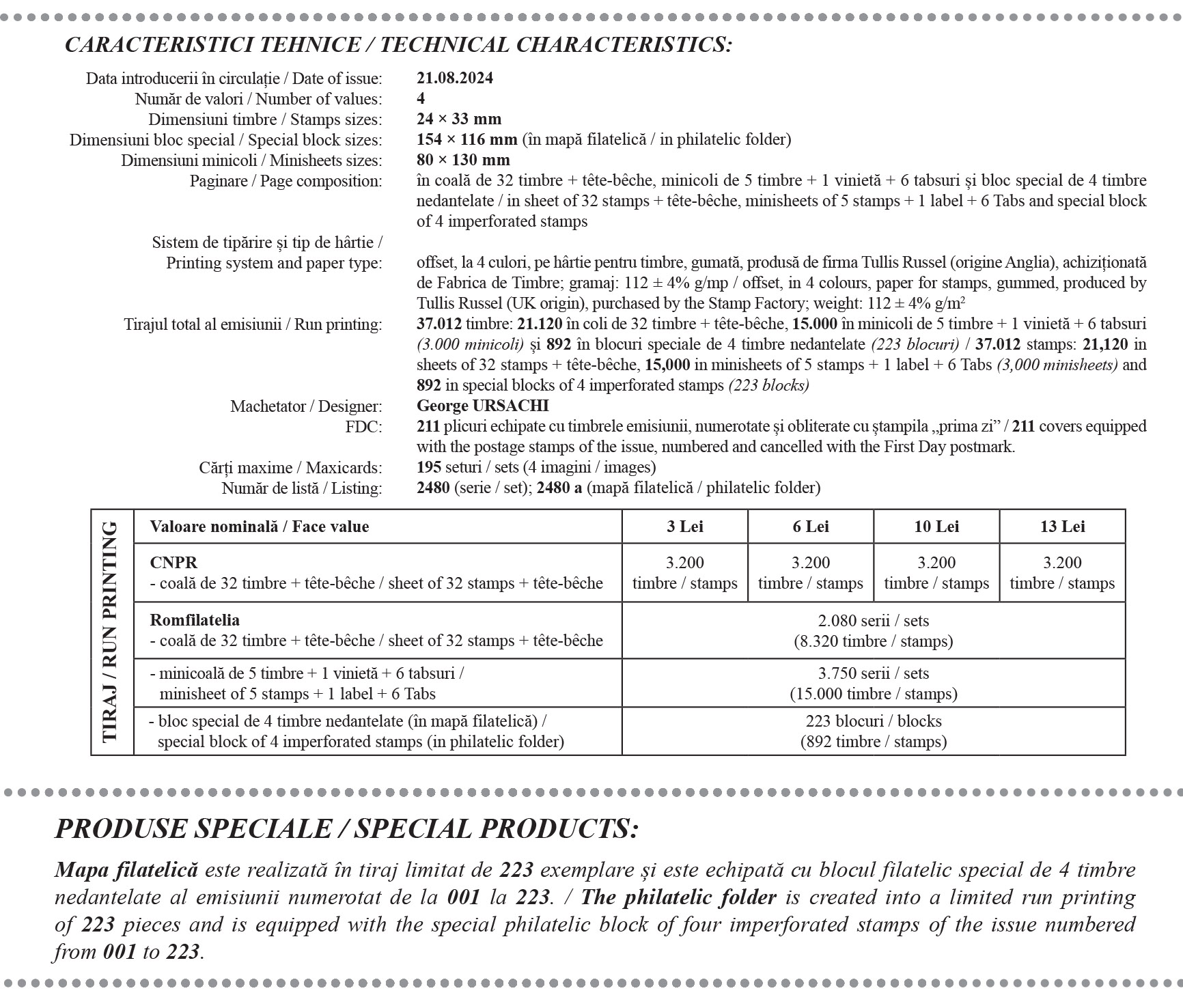 Romfilatelia will introduce into circulation on Wednesday, August 21st this year an interesting postage stamps issue, entitled “Seahorses”.
Romfilatelia will introduce into circulation on Wednesday, August 21st this year an interesting postage stamps issue, entitled “Seahorses”.
The issue consists of four stamps, a First Day Cover, a philatelic folder with a special block in a limited run printing and a set of 4 maxicards for the pasionates of maximaphily.
Beloved for their shape and colour, seahorses include 53 species currently known, grouped into one genus, Hippocampus. Among them, in terms of size, we find the largest species, Hippocampus abdominalis, in the waters of Australia and New Zealand, which reaches 35 cm, and the smallest species, Hippocampus satomiae, in the Celebes Sea and the Moluccas Sea, which reaches only 1.4 cm.
Seahorses live in all warm and temperate waters of seas and oceans. However, they are also found in brackish waters (estuaries, lagoons) and in some rivers (e.g., Thames, England).
Two species live in the Black Sea and in the very territorial waters of Romania: Hippocampus guttulatus (face value of Lei 3), a common species, also widespread in the eastern Atlantic and in the Mediterranean Sea, and Hippocampus hippocampus.
Two other widely distributed species are Hippocampus reidi (in the western Atlantic, Caribbean Sea) and Hippocampus histrix (face value of Lei 10) in the waters of the Indian and Pacific oceans.
Belonging to the sea fish family, seahorses swim upright with their heads up. Slow swimmers, seahorses avoid predators by using camouflage. With the help of their prehensile (grasping) tail, they cling to various underwater plants, some species even imitating the texture of the substrate on which they sit, as in the case of the dwarf species Hippocampus bargibanti (face value of Lei 13 in the waters of the Indo-Australian archipelago.
The food of seahorses includes small planktonic organisms and mostly crustaceans. Their reproduction has many curiosities: after a rather complex courtship display, the eggs are laid by the females, with the help of an ovipositor tube, in a special pouch of the male, where they are fertilized and then incubated; after hatching (coming out of the eggs), the young are expelled by the male into the aquatic environment.
The existence of seahorses is threatened by the degradation and pollution of the marine habitat, by accidental catches in fishing nets, but also by the trade (especially with dried specimens) practiced both for “curiosities” and for the superstitious “pharmacopoeia” of various countries.
Similar to sea horses, included in a family that also includes pipefishes (Singnathidae) are the so-called seadragons, the genus Phycodurus, with one species Phycodurus eques (face value of Lei 6) and Phyllhopteryx, which live on the southern coasts of Australia. They have similarities with seahorses but are larger in size (up to 45 cm) and practice horizontal swimming. They have a lot of appendages, unevenly developed, which imitate, for the purpose of camouflage, the algae among which they live.
The First Day cover depicts a seahorse, from the family Hippocampus reidi, living in the waters of subtropical regions, having a size of up to 15-18 cm.
Romfilatelia thanks the museographer Alexandru Iftime, Ph.D., from the “Grigore Antipa” National Museum of Natural History, for the specialist consulting given to the development of this postage stamps issue.



